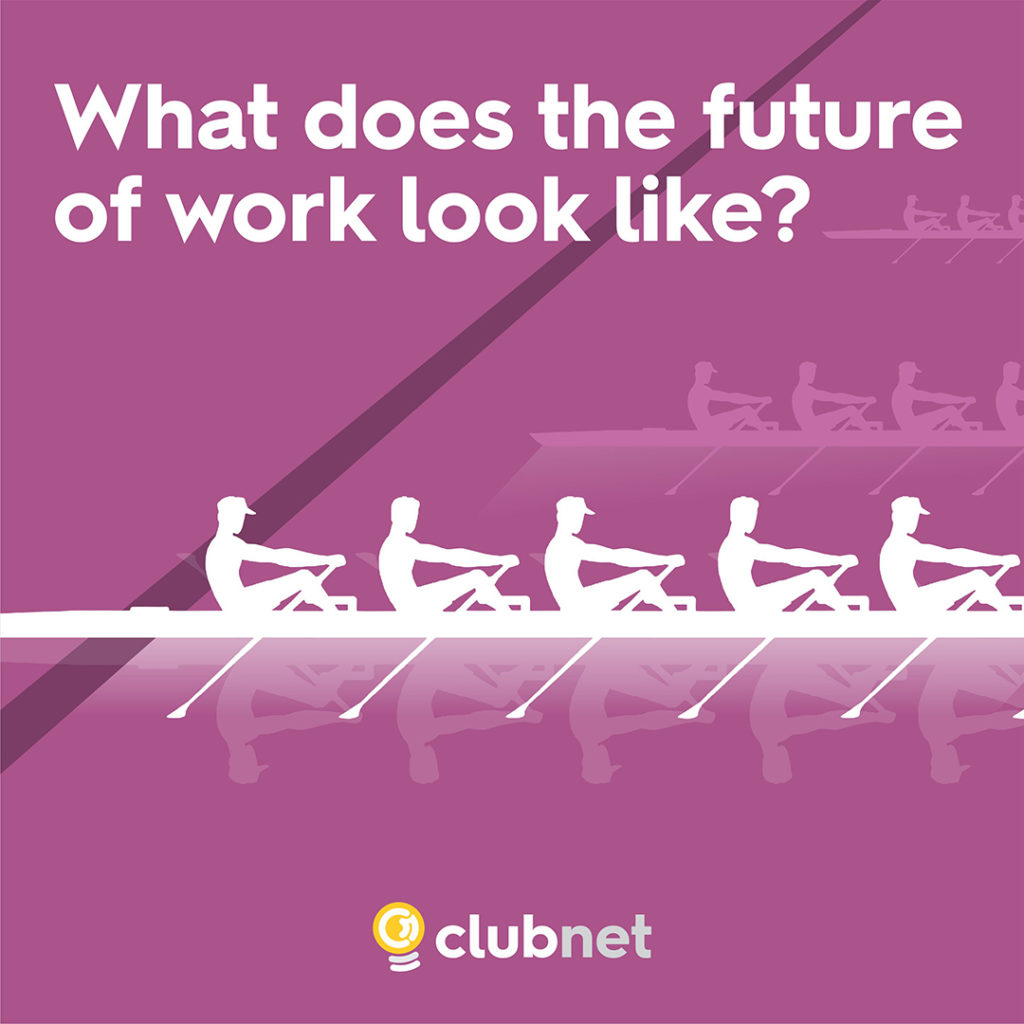The pandemic shocked the labour market and many organizations are now experiencing increased turnover rates, especially of their top performers. One of the main reasons for that is that we are still using retention techniques from 10-20 years ago (hint: they didn’t work back then either!). The future of work looks very different – and understanding that is integral for any organization that wants to remain competitive.
With a top-down hierarchy instead of a collaborative, agile organizational culture, companies are not utilizing their employees’ full potential.
Therefore, we create this case study on the future of work so you may consider what aspects you can incorporate in your own company.
What is the future of work?
In the past, with leaders focused on the traditional way of working, with a top-down hierarchy, the mantra was “we need to be in control and communicate decisions down the line for execution”.
Although still the most common, this way of working results in misinformed decisions, unrealistic deadlines, power trips, and political struggles. But that’s not the way your employees would like to be working.
The future of work is agile. An agile team-based organization focuses on providing guidance and support, while empowering employees to make the best decisions they can at a given time. This approach helps build resilient and innovative companies based on values and open and honest communication.
Here’s the main difference: while traditional organizations assume that the few at the top know best, resilient organizations recognize that their teams are what is going to help them weather any storm.
What can companies do?
With the Great Resignation, HR teams scrambled to revive some of their retention policies with no success. We advocate for a scaled agile approach, rooted in the company’s context, allowing resilient organizations to foresee and adapt to constant change.
This new system should be based on the 3 As: ask, address and amplify.
- Ask: encourage continuous feedback from your teams. Create psychological safety to receive honest feedback;
- Address: Align the company’s plans to the current focus and to what employees need to do their best work;
- Amplify: Create a long-term plan of how to continuously evolve as an organization.
“Insanity is doing the same thing over and over and expecting different results.” – Albert Einstein
There are many benefits to being what we at Clubnet call a resilient organization; here are some:
- Survival: you can’t keep doing the same things and expecting different results. If you are quickly losing your top employees, you won’t remain competitive in the market much longer!
- Employee engagement: when having their opinions and needs taken into account, your employees with feel engaged and will work diligently to help you succeed;
- Customer satisfaction: The future of work also takes into account the customer experience. Add to that your engaged employees, and it is guaranteed that customer satisfaction will increase.
“You don’t need to change – your survival is not mandatory.” Edwards Deming
Many companies are starting to adopt agile and scaled agile principles in their cultural transformations. So they are already experiencing these and other benefits that tend to emerge with greater levels of organizational maturity.
As a way to demonstrate these principles, we did a brief case study of Moonpig.
Case study: Moonpig
Specialized in the sale of gifts and cards, Moonpig is an online British company. It made the decision to implement business agility in 2017. Though leaders feared that employees would find the process difficult, the company was facing internal and external factors that forced it to adopt Agile practices.
- External factors:
Companies in the 1960s could expect to be in business for 70+ years. Nowadays, organizational lifespans are approximately 15 years – an almost 80% decline. In other words, the company’s longevity was at risk, which was a wake-up call for Moonpig. Knowing of these market changes, and recognizing that customer experience is integral to survival, they begain their agile journey.
- Internal factors:
At the company’s headquarters, there was a wall separating the IT and Marketing teams. For Moonpig’s CEO, this was eye-opening: in practice, too, the two teams weren’t functioning in cohesiveness around deadlines, tasks, and goals.
The Final Result
With a focus on addressing organizational longetivity, Agile was presented to the entire team as a solution, starting with two pillars: requests for feedback from the entire team and employee engagement in this new plan.
Therefore, Moonpig says to have happier and faster employees. With cohesion and better customer experience, Agile helped it to increase sales and get positioned as a reference company in its sector.
After that, we will keep an eye on them to see whether they maintain this trajectory towards becoming a resilient organization!
Do you want to know more about Agile? Contact us!




